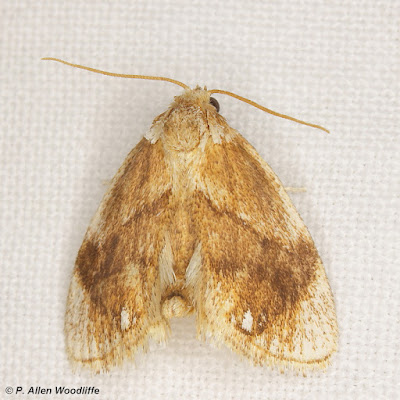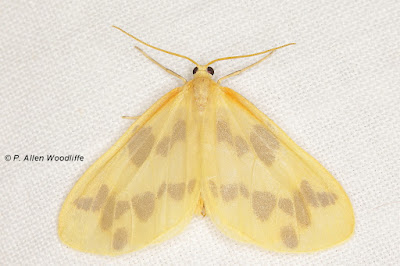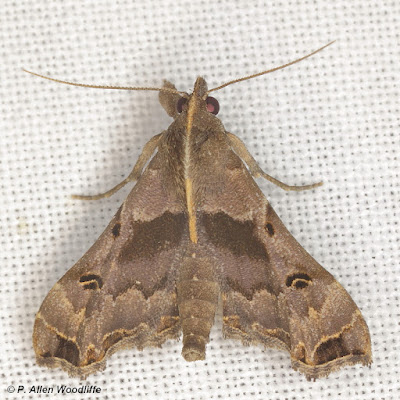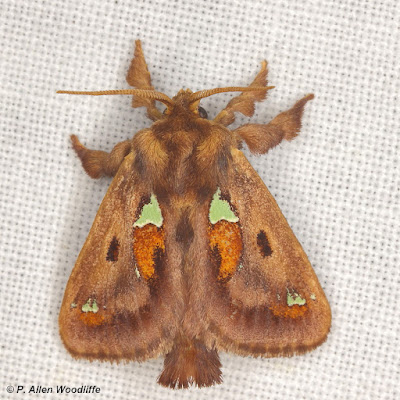July 22 begins National Moth Week for 2023. I haven't been giving moths their due so far this year, but it is time! I have been out on occasion, but not as often as in the past few years. A couple of recent black lighting visits to Rondeau have been quite productive. Some of the highlights, and more colourful individuals of the approximate 100 species from those visits, are shown here.
American Idia, shown first, is pretty regular, but not always in as good a shape as this one.
 |
| Arched Hooktip |
Here is one I have rarely seen, let along photographed. It is the Black Bit Moth, and fairly large as most moths go.
I'm not entirely sure about this next one. It might be a Fragile White Carpet.
 |
| Delightful Donacula |
 |
| Early Button Slug Moth |
Next is one with rather limited Ontario distribution, and is on the list of rare species of Ontario. It is a Faint-spotted Palthis.
 |
| Fall Webworm |
 |
| Frosted Tan Wave |
Another rare species in Ontario is this Gold-lined Melanomma.
Quite a common species, but rarely have I seen it looking so greenish, is this Green Pug.
 |
| Guenee's Pearl |
 |
| Hickory Tussock Moth |
 |
| Jewel-tailed Slug Moth |
This next one is extremely small, only about 5 mm long, and rarely photographed in Ontario. It is the Linden Bark Borer and is not native.
 |
| Pale-winged Crocidophora |
One of my all-time favourites, seen primarily in mid to late June and sometimes early July is this Rosy Maple Moth.
 |
| Showy Emerald |
 | ||||
| Sooty-winged Chalcoela |
Another one in the slug moth group is this Spiny Oak-slug Moth.
 |
| The Bad-wing |
 |
| Beggar Moth |
There are several similar looking moths, but I am fairly certain this is a Virginian Tiger Moth.
Another large Sphinx moth is this next one, the Walnut Sphinx.
At the other end of the size spectrum is another slug moth, the Yellow-collared Slug Moth.
Depending on the weather and my energy levels, I expect to be out with the black lights again on several occasions over the next few nights during National Moth Week. It is about the peak time for moths, although there will be lots more to photograph and document until October!
If you would like to subscribe, or unsubscribe, to Nature Nuggets, send an email to: prairietramper@gmail.com





















I'm always blown away by the variety of these night treasures, with their incredible shapes and unexpected colours, that you bring to light for us. Thank you, I love them.
ReplyDeleteThanks, Paula. There are indeed, so many incredible colours and patterns amongst the moth group, which are seldom revealed and appreciated unless one is able to get some close-up photos. It is always fun to see some of the ~3000 species that occur in Ontario!
Delete